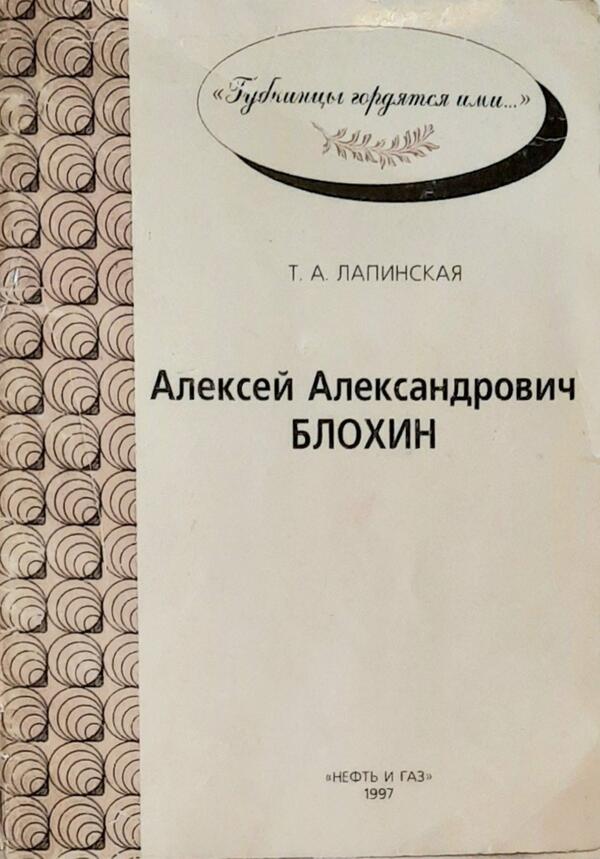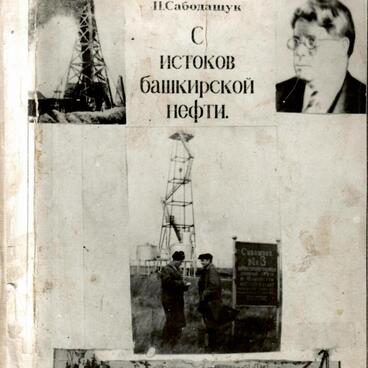Having discovered oil in the Ishimbay region, Soviet geologist Alexey BlokhIn earned a permanent place in the history of the Republic of Bashkortostan as a whole and the city of Ishimbay in particular. His name is frequently mentioned in scientific works, one such study being ‘Alexey Alexandrovich BlokhIn’ by Doctor of Geological and Mineralogical Sciences, Professor Tatiana Lapinskaya.
She managed to find out much about BlokhIn in the late 1930s, when she studied the structure of oil-bearing sediments near the Belaya River in the IshimbAy region. In this study, she describes him as an outstanding petroleum geologist who deserves his place in the history of the Russian oil industry and without whose enthusiasm it could have taken much longer to discover high-yield oil deposits in Bashkortostan. Lapinskaya stresses that ‘the oil gushers that erupted in the spring of 1932 from two exploratory wells sunk by Alexey BlokhIn on the banks of the Belaya River near the village of Ishimbaevo were proof of the oil-bearing capacity of the Cis-Urals region and, moreover, the Ural and VOlga region as a whole.’
Blokhin was born in the village of Golovino near Yaroslavl in May 1897. He had studied in the local village school before graduating with honors from the Kostroma Grammar School No. 1 in 1917. Afterwards, he enrolled in the Natural Science Department of the Faculty of Physics and Mathematics at Moscow State University; however, he later quit studies, as money was tight. At the end of 1920, while serving in the military, he was sent to study at the Geological Exploration Department of the Moscow Mining Academy, where, at the time, the brilliant scientist and professor Ivan Gubkin delivered his lectures. Blokhin was so impressed by Gubkin’s lectures that he decided to join his course. In 1929, already with a degree in mining engineering under his belt, he defended a graduation thesis on “Geology and Oil Exploration in the Kerch Peninsula.”
Blokhin had a significant role in the establishment of Bashkortostan’s oil industry. He proved Gubkin’s assumption that there were large oil deposits near the village of Ishimbaevo. Blokhin and his supporters convinced other scientists and the Soviet officials of Ishimbay’s prospects and that the region required investments in oil development. Despite facing extreme difficulties, Blokhin supervised the drilling operations personally and achieved tremendous success, finding oil in two out of four drilled wells.
While surveying the Ishimbay region, Blokhin completed his postgraduate studies under Ivan Gubkin at the Academy of Sciences of the Soviet Union. In 1933, he became deputy editor-in-chief of the ‘Issues of Soviet Geology’ journal and was included in the editorial board of the ‘Oil Industry’ journal. He spoke at the 1936 Conference of International Union for Quaternary Research in Vienna, as well as at the International Congress of Mining, Metallurgy, and Applied Geology in Paris a year later. During the Great Patriotic War, Blokhin was appointed the deputy head of the newly established Bashkir Oil Expedition under the Council for the Study of Production Forces of the Academy of Sciences of the Soviet Union. In 1942, Blokhin succumbed to heart failure and passed away at the age of 45 while visiting Ishimbay with the goal of coordinating and accepting survey work.
She managed to find out much about BlokhIn in the late 1930s, when she studied the structure of oil-bearing sediments near the Belaya River in the IshimbAy region. In this study, she describes him as an outstanding petroleum geologist who deserves his place in the history of the Russian oil industry and without whose enthusiasm it could have taken much longer to discover high-yield oil deposits in Bashkortostan. Lapinskaya stresses that ‘the oil gushers that erupted in the spring of 1932 from two exploratory wells sunk by Alexey BlokhIn on the banks of the Belaya River near the village of Ishimbaevo were proof of the oil-bearing capacity of the Cis-Urals region and, moreover, the Ural and VOlga region as a whole.’
Blokhin was born in the village of Golovino near Yaroslavl in May 1897. He had studied in the local village school before graduating with honors from the Kostroma Grammar School No. 1 in 1917. Afterwards, he enrolled in the Natural Science Department of the Faculty of Physics and Mathematics at Moscow State University; however, he later quit studies, as money was tight. At the end of 1920, while serving in the military, he was sent to study at the Geological Exploration Department of the Moscow Mining Academy, where, at the time, the brilliant scientist and professor Ivan Gubkin delivered his lectures. Blokhin was so impressed by Gubkin’s lectures that he decided to join his course. In 1929, already with a degree in mining engineering under his belt, he defended a graduation thesis on “Geology and Oil Exploration in the Kerch Peninsula.”
Blokhin had a significant role in the establishment of Bashkortostan’s oil industry. He proved Gubkin’s assumption that there were large oil deposits near the village of Ishimbaevo. Blokhin and his supporters convinced other scientists and the Soviet officials of Ishimbay’s prospects and that the region required investments in oil development. Despite facing extreme difficulties, Blokhin supervised the drilling operations personally and achieved tremendous success, finding oil in two out of four drilled wells.
While surveying the Ishimbay region, Blokhin completed his postgraduate studies under Ivan Gubkin at the Academy of Sciences of the Soviet Union. In 1933, he became deputy editor-in-chief of the ‘Issues of Soviet Geology’ journal and was included in the editorial board of the ‘Oil Industry’ journal. He spoke at the 1936 Conference of International Union for Quaternary Research in Vienna, as well as at the International Congress of Mining, Metallurgy, and Applied Geology in Paris a year later. During the Great Patriotic War, Blokhin was appointed the deputy head of the newly established Bashkir Oil Expedition under the Council for the Study of Production Forces of the Academy of Sciences of the Soviet Union. In 1942, Blokhin succumbed to heart failure and passed away at the age of 45 while visiting Ishimbay with the goal of coordinating and accepting survey work.



